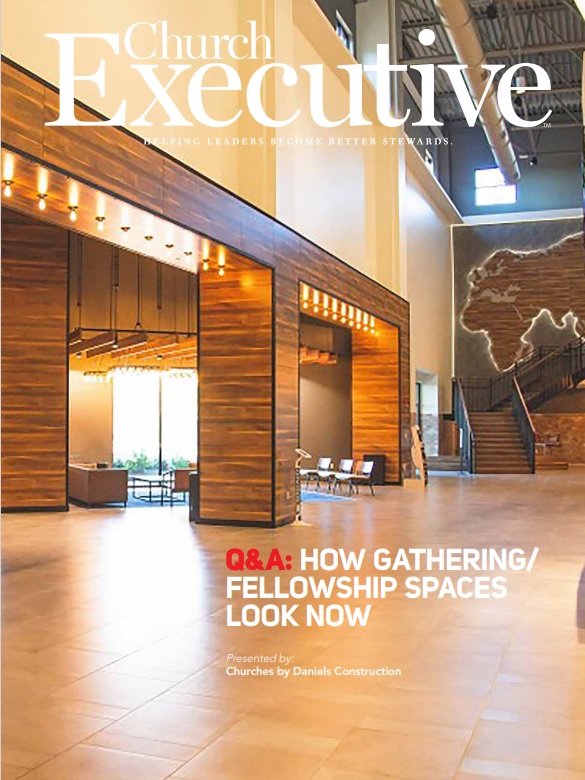

President & CEO
Churches by Daniels Construction
What are the signs that a church does not have adequate gathering and fellowship space right now?
Charlie Daniels: The first sign starts with pre- and post-service traffic. If your congregation is not gathering before service or staying to gather after service, normally this is due to not having adequate gathering space.
Connection groups are a very important; they provide every member of Church a safe place to grow and find the friendships that they need.
How has the importance of gathering spaces shifted and evolved over the past 10-20 years?
Daniels: One of the important aspects of gathering space for most churches is that of community. The very layout of the facility and its design must invite you to gather.
The design of functional space has evolved over the years. Many of us went to church because our grandparents went, and our parents went and so on — it was just what you did. In current time, church choice for parents is often influenced by their children and how connected and engaged the youth feel in church. We want them to have the same sense of belonging that we had in our own growth years.
Are there some common forms or configurations that gathering, and fellowship spaces can take?
Daniels: Designing to the ministry needs should the main the objective when configuring space. Every ministry is different, and the goal is to design intentional space to meet what each individual church needs. A lot of church facilities are adding coffee shops, workspaces, gyms, basketball courts for the youth, and food service. Having a café allows the congregation to gather pre- or post-service. A café also allows the pastor to deliver his message to someone who is not in the service, offering additional seating for people that aren’t yet comfortable in a more traditional sanctuary but still giving them the opportunity to hear the Word.
Once again, the goal is community involvement and a safe space for families.
“Prioritize interactive spaces; a healthy church is a church with a strong sense of community and connection.” — Charlie Daniels
What about outdoor gathering / fellowship spaces? Especially with COVID, have those gained popularity in recent years?
Daniels: Designing intentional space for all ages is important. Taking the gathering space outdoors offers countless additional opportunities to reach the community. Designing with the goal of gathering doesn’t just have to stop with the church either, but also offers an opportunity to allow people to rent outdoor facilities during the week, creating additional income and community awareness. From amphitheaters to volleyball and basketball courts, or even a playground, there are many great ideas for gathering spaces to extend outdoors.

How can gathering / fellowship spaces be designed to be welcoming for people of all ages?
Daniels: A space designed that is not functional is a hindrance for ministry effectiveness. Function must be considered as important as aesthetics. Designing spaces that foster and promote social interaction ranks high on the list of of a successful church design. Color, light, texture, furniture, and room proportion all should be emphasized during the planning stage to ensure that spaces are interactive. Architecture can support or hinder social exchange. Prioritize interactive spaces; a healthy church is a church with a strong sense of community and connection.
How important is it for a church’s ‘brand’ to be integrated into gathering / fellowship spaces?
Daniels: A unique and solid church brand (ICON) tells your unique story. Icon walls are typically what you will find integrated into gathering space. A wall or series of walls that represents a current sermon series, or a more permanent design tying into church mission statement or a core verse keeps the vision in front of your congregation on a weekly basis.
Let’s talk about wayfinding. What are some best practices for gathering / fellowship spaces?
Daniels: Effective wayfinding is an essential function that needs to be carefully considered. Wayfinding is a set of tools, usually graphics or architectural design, to help a visitor familiarize themselves with the navigational layout of a church facility. Although wayfinding is informational, it can be creative. But in a broader context, wayfinding should be considered in architecture, interiors, landscaping, lighting and, yes, signage and graphics. Wayfinding can bring a sense of safety and security for new members trying to find their way in a new facility, especially parents with children.
— Reporting by RaeAnn Slaybaugh


